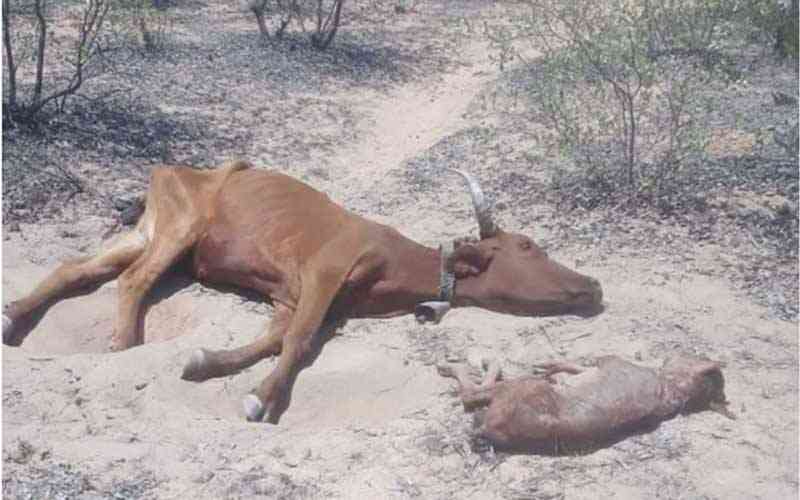
THE El Niño-induced drought is threatening to reduce the national herd because of the weather conditions associated with the phenomenon, a government official has revealed.
According to the Food and Agriculture Organisation (FAO), El Niño could bring about abnormal drought conditions in some important southern hemisphere livestock-producing countries, deteriorating pastures and rangeland.
In its November food security report on Zimbabwe, the United States Agency for International Development (USAid) warned that access to water is declining across most typical semi-arid areas where rainfall has been below average in November.
In these areas, USAid reported that livestock and some people travel longer than normal distances to access water, reducing the time available to households to engage in other domestic and livelihood activities. Pasture conditions are also deteriorating in these areas negatively impacting cattle.
The Land, Agriculture, Water, Fisheries and Rural Resettlement ministry livestock production deputy director Rutendo Nyahoda said El Niño was the major cause of livestock deaths.
“El Niño has resulted in prolonged dry spells due to delayed rains. We have also experienced excessive heat, so prolonged dry conditions lead to suppressed herbage growth and we have a shortage of feeding stock for our grazing livestock,” she said, in a recent presentation distributed to media outlets.
“The available feed because it’s in dried condition is of poor quality, it’s not able to meet the basic nutritive requirements for the livestock.”
Nyahoda said due to the prolonged dry conditions, the country was facing acute water shortage for both human and livestock consumption depending on the region.
“With limited herbage, our livestock are likely to go hungry and they tend to be weakened physiologically. With a weakened physiological condition, our livestock are susceptible to various conditions,” she added.
As pasture and rangeland conditions recover, livestock offtake is expected to decline as stock numbers are allowed to build up again.
“Our livestock are susceptible to various opportunistic diseases, they can easily be trapped in the mud, and they cannot easily get out,” Nyahoda said.
“Because our livestock graze close to the ground, there are susceptible to soil borne diseases and they graze on foreign objects such as plastics and fabric and once ingested, these cause death.”
Zimbabwe has a total land area of 39,6 million hectares of which 33,3 million hectares (85%) is agricultural land and the remaining area consists of national parks, State forests and urban land.
The official said the livestock could also end up ingesting poisonous plants which are the only vegetative material that might have remained green in the veld.
Nyahoda said government had approached various stakeholders such as non-governmental organisations, UN agencies, and parastatals for immediate and short-term interventions to the El Niño effects.
“The government has already approached partners in terms of borehole drilling to ensure short-term supply of water for livestock. The government has approached partners to support supplementary feed, which can be in the form of hay or commercially produced feed so that livestock will maintain or gain condition,” she said.
Nyahoda also said farmers had a role to play in sustaining livestock’s health by providing adequate water.
“The government is already supporting drilling boreholes in worst affected areas so farmers should ensure that their livestock is provided with adequate water. Farmers should ensure that areas surrounding their livestock handling facilities and in the grazing areas are free from foreign objects,” she added.







